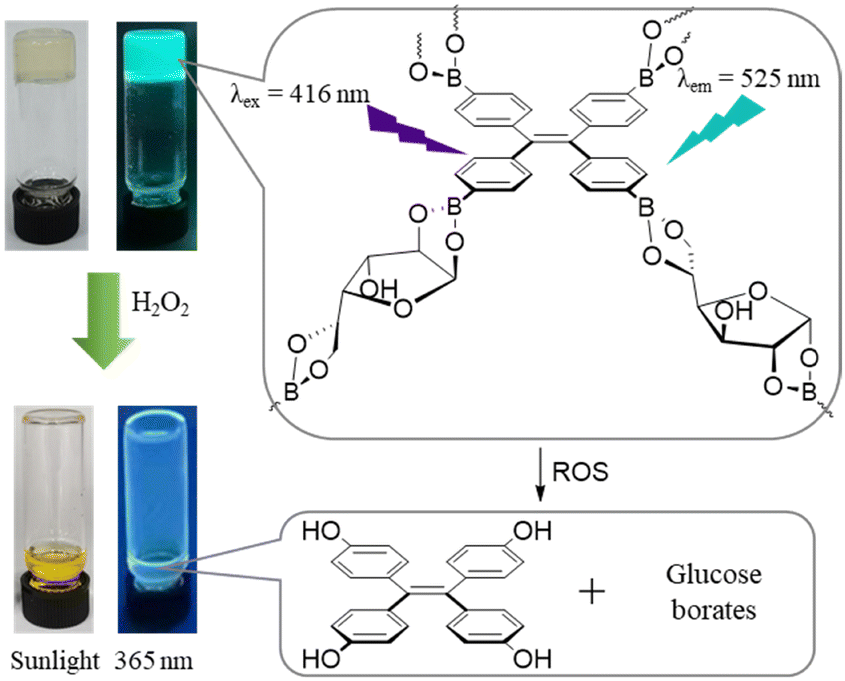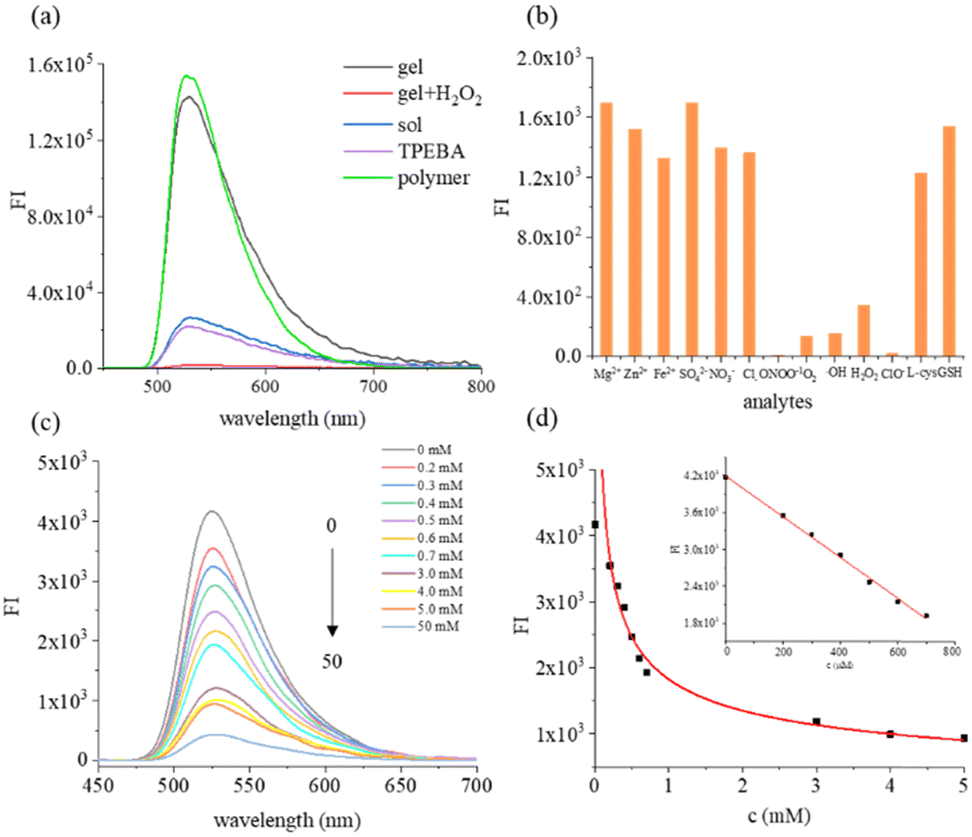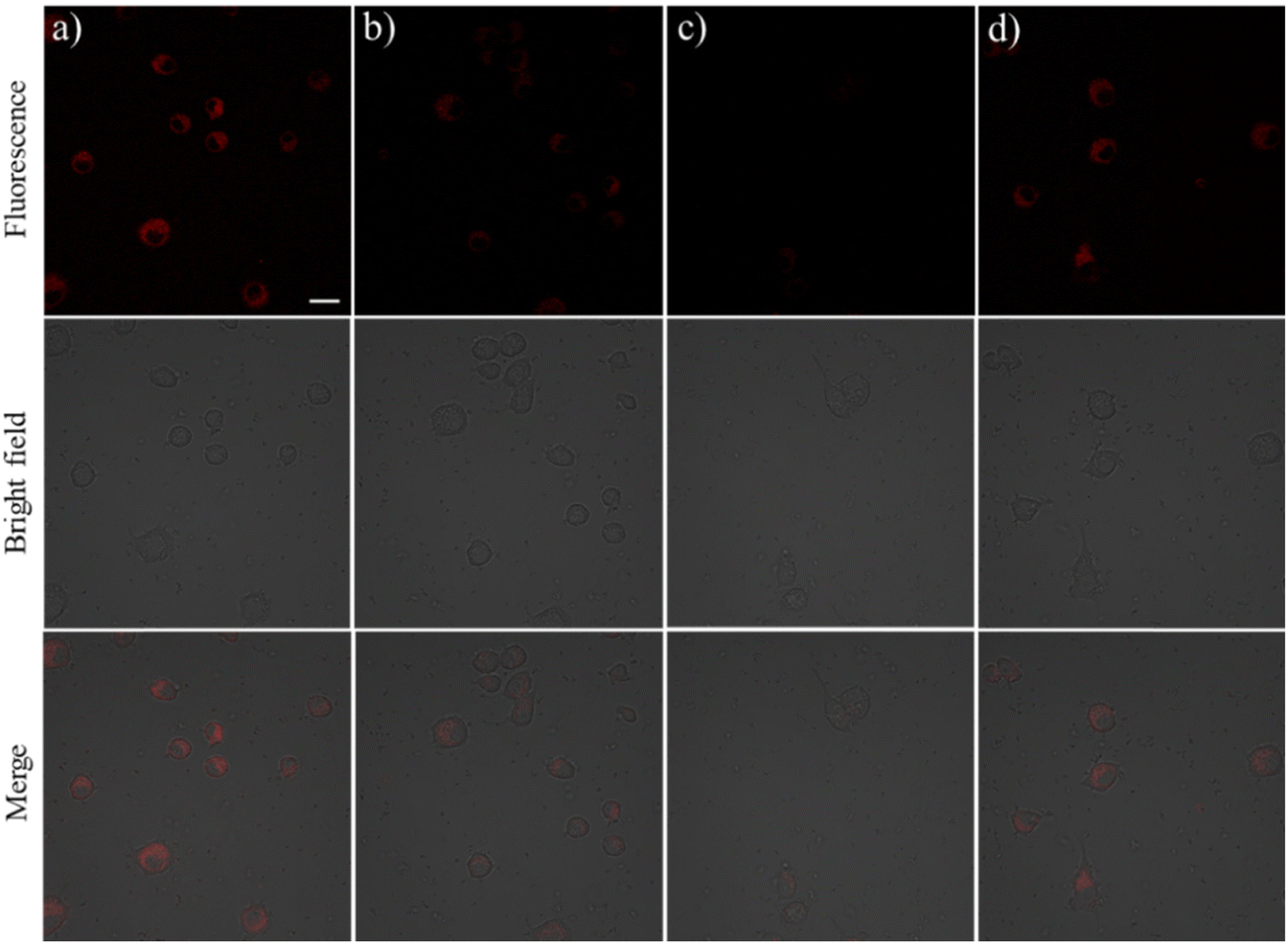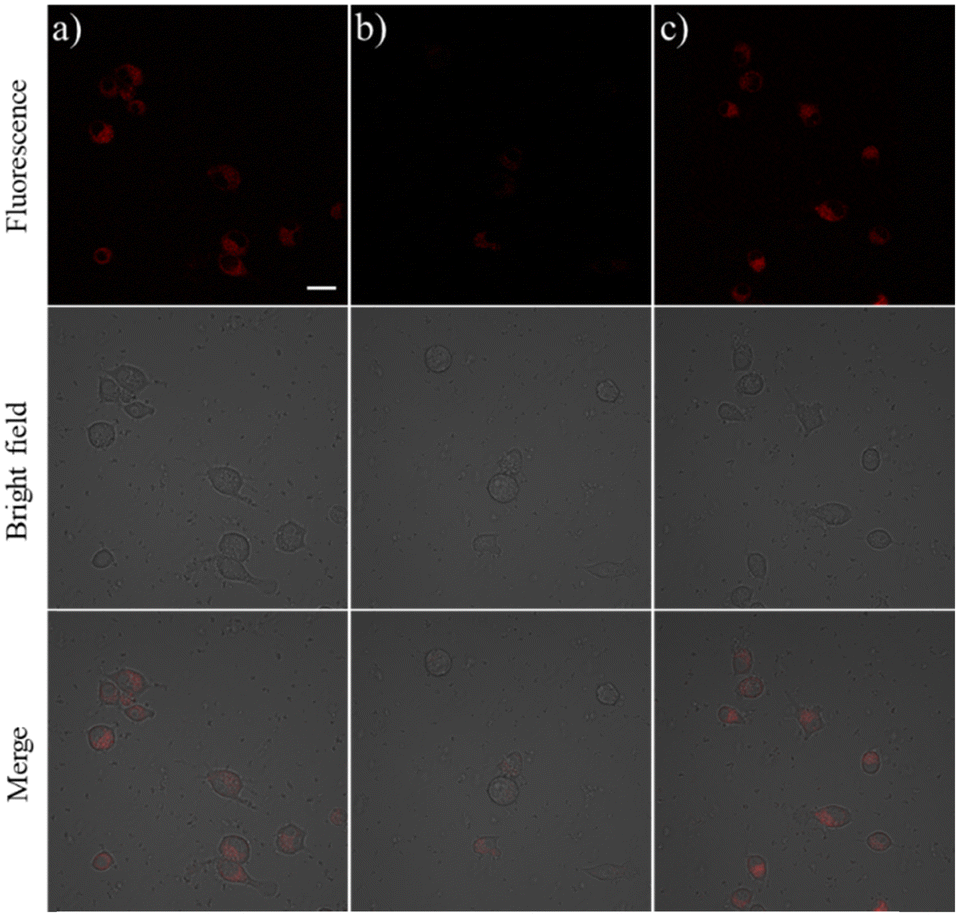Macroscopic and fluorescence detection of reactive oxygen species by using a glucose-linked tetraphenylethylene polymer gel
Received 24th February 2023 , Accepted 10th April 2023
First published on 10th April 2023
DOI: 10.1039/D3NJ00885A (Communication) New J. Chem., 2023, 47, 8484-8488
https://pubs.rsc.org/en/content/articlehtml/2023/nj/d3nj00885a
Abstract
A fluorescent polymer probe was developed by connecting tetraphenylethylene (TPE) with glucose via the formation of borate ester linkages. Based on the selective breaking of C–B bonds, the macroscopic and fluorescence detection of reactive oxygen species (ROS) in vitro and in cells was successfully realized.

Fig. 1 Polymer gel TPEBA@Glu for visual and fluorescence detection of ROS.

Fig. 2 Fluorescent emission spectra of (a) TPEBA@Glu (1.8 wt%) before and after the addition of H2O2 (0.2 M), and solid TPEBA–Glu; fluorescent emission spectra of TPEBA–Glu (b) (6 μM in PBS buffer with 10% DMSO at pH = 7.4) toward different analytes (100 mM for Mg2+, Zn2+, Fe3+, SO42−, NO3−, Cl−, and 10 mM for ONOO−, 1O2, ˙OH, H2O2, ClO−, L-Cys, GSH), (c) with various concentration of H2O2 at 0, 0.2, 0.3, 0.4, 0.5, 0.6, 0.7, 3, 4, 5, and 50 mM, and (d) their curves of emission intensity versus the concentration of H2O2. λex = 416 nm. Reaction time: 1 h.

Fig. 3 Confocal fluorescence and bright field images of Raw 264.7 cells after incubation with (a) without H2O2, (b) 50 μM H2O2, (c) 100 μM H2O2 for 30 min, and (d) 100 μM H2O2 for 30 min then with 1 mM NAC for 60 min; followed by washing and further incubation with 10 μM TPEBA–Glu for 30 min. λex = 405 nm, red channel 500–600 nm. Scale bar: 20 μm.

Fig. 4 Confocal fluorescence and bright field images of Raw 264.7 cells after incubation with (a) without PMA, (b) with 2 μM PMA for 60 min, (c) 2 μM PMA for 60 min then with 1 mM NAC for 60 min; followed by washing and further incubation with 10 μM TPEBA–Glu for 30 min. λex = 405 nm, red channel 500–600 nm. Scale bar: 20 μm.
In summary, a fluorescent and macroscopic probe for the detection of ROS was rationally designed by using TPE-derived polymers. The borate esters formed between the TPE unit and Glu played dual roles as the sensing site and the connecting linkage. In view of remarkable fluorescence quenching and the low cytotoxicity, the monitoring of ROS in Raw 264.7 cells was successfully realized.

